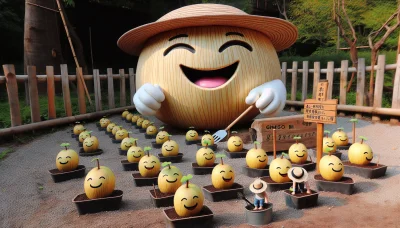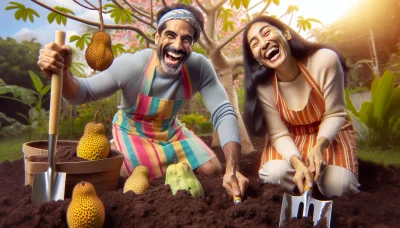How does durian taste Quiz
Test Your Knowledge
Question of
How Does Durian Taste?
Durian stands out as a distinctive fruit within the gardening realm, primarily due to its divisive flavor profile. Known for its pungent aroma, which some find enchanting and others overwhelming, the durian's taste is a complex blend of sweet, creamy, and savory notes. This unique combination makes it a subject of curiosity and debate among food enthusiasts around the world.
The Unique Flavor of Durian
The taste of durian is often described as a polarizing combination of savory, sweet, and creamy flavors that defy easy comparison. Some liken it to a rich blend of almonds, while others detect a hint of cheese, caramel, or even garlic among its complex notes. The creamy texture of durian pulp can remind one of a custard, enhancing its unique sweetness with a consistency that's both luxurious and perplexing. However, the flavor of durian is highly subjective, with its appreciation deeply divided; for every person who finds it irresistible, there might be another who is put off by its potent aroma. This enigmatic fruit stands as a testament to the diverse palette of tastes nature offers, inviting adventurous eaters to explore its mysteries firsthand.
Growing Durian: A Gardener's Challenge
Durian trees are known for their unique fruit, often referred to as the "king of fruits" for its size, distinctive aroma, and rich flavor. Growing durian trees can be a rewarding challenge for gardeners, but they require specific conditions to thrive. These trees are best suited to tropical climates where temperatures are consistently warm, generally between 22°C to 35°C, with high humidity. They do not tolerate cold temperatures or frost. The soil should be rich, well-drained, and fertile, with a pH level ranging from 6 to 7. Regular watering is essential, especially in dry periods, but overwatering can lead to root rot. With the right conditions and care, durian trees can produce fruit after 5 to 7 years, offering a unique and exotic addition to any garden.
Harvesting and Preparing Durian
Durian fruits are best harvested when they naturally fall from the tree, a sign that they are perfectly ripe. This typically happens during the daytime, from late spring to early summer, depending on your climate. To prepare durian for eating, use gloves to handle the fruit because of its sharp outer shell. Cut along the seams of the durian with a knife, then pry it open to reveal the creamy, custard-like flesh inside. Remember, durian has a strong smell that some people find unpleasant, so consider enjoying it outdoors or in a well-ventilated area.
Health Benefits of Durian
Durian, often known as the "king of fruits," is not only unique in flavor and aroma but also rich in nutritional value. This exotic fruit is loaded with vitamins and minerals that are essential for maintaining good health. It is particularly high in vitamin C, which is known for its immune-boosting properties, and B-vitamins, including folic acid, which are crucial for metabolic health. Durian is also a good source of dietary fiber, promoting digestive health and aiding in cholesterol management. Additionally, it contains a significant amount of potassium, which is vital for maintaining blood pressure levels and ensuring proper muscle function. Beyond these nutrients, durian offers various antioxidants and healthy fats, which contribute to heart health and help in reducing inflammation throughout the body. Incorporating durian into your diet can offer a multitude of health benefits, making it a valuable addition to a balanced and nutritious diet.
Common Reactions to Durian Taste
- Immediate delight and love for its unique flavor
- Surprise at its creamy texture and sweet taste
- Uncertainty due to its strong aroma
- Dislike of its intense smell, comparing it to rotten onions
- Appreciation for its taste but aversion to its smell
- Complete aversion, unable to get past the smell to try it
- Curiosity over its complex flavor profile, leading to multiple tastings
- Enjoyment of durian in specific dishes, but not as a standalone fruit
Exploring the Taste of Durian in Your Garden
If you've ever been intrigued by the unique flavors of exotic fruits, growing your own durian tree could be a thrilling venture. Imagine stepping into your garden, not just to enjoy the greenery, but to harvest and taste the fresh durian right from the branch. This experience brings a whole new level of appreciation for this distinctive fruit, known for its strong aroma and rich taste. Beyond the taste, the process of nurturing a durian tree from sapling to fruit-bearing maturity can add an enriching layer to your gardening journey. It's a chance to connect with nature, learn about tropical horticulture, and enjoy the fruits of your labor quite literally. Embrace the joy of gardening and the adventure of experimenting with exotic fruits like durian. It's not just about the flavors you'll discover, but the satisfaction of growing something truly unique in your own backyard.












